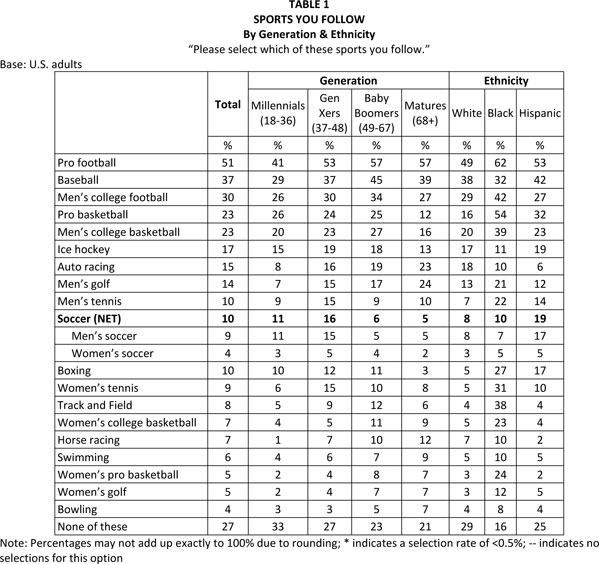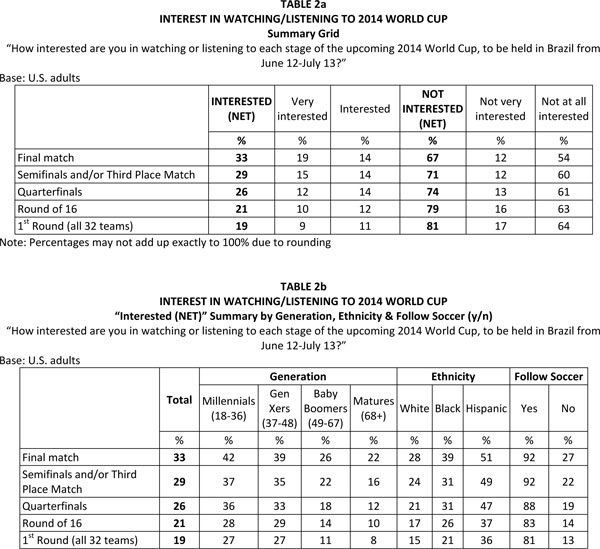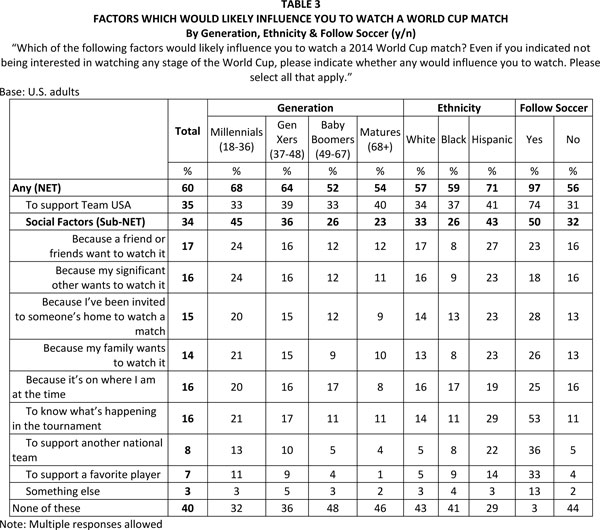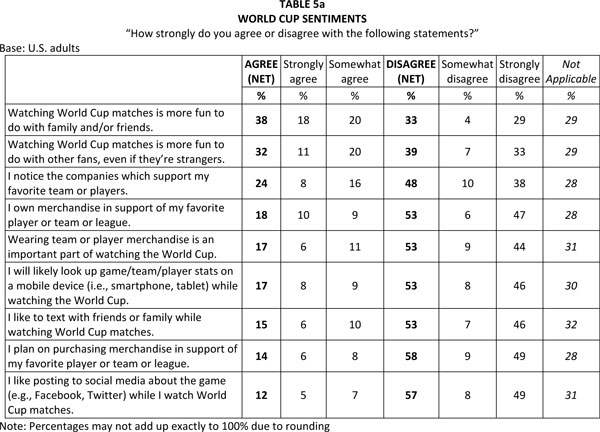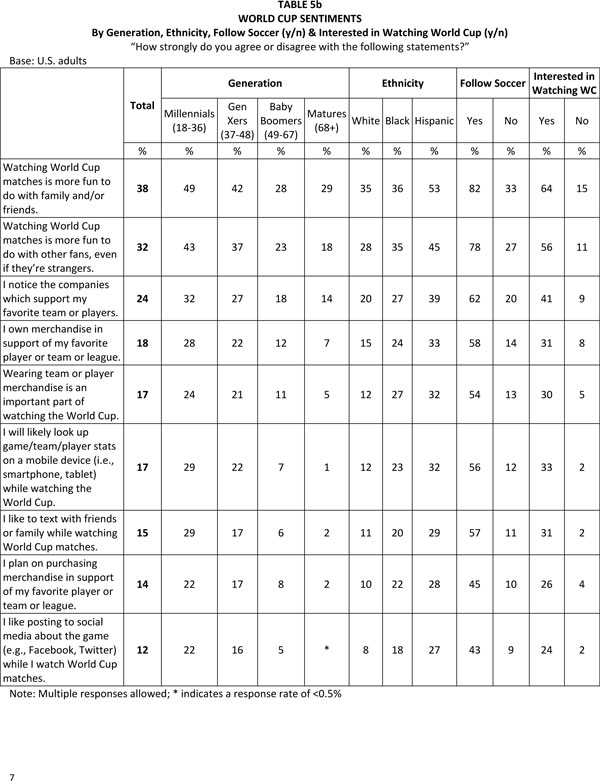World Cup Audience Is More Than Core Soccer Audience
June 12, 2014
 The first matches are only hours away, and over the course of the month-long tournament billions (with a “b”) of fans will look to catch some of the action, whether on TV, on the radio, via other assorted media or even on-site. But while most of the world is getting ready for the event, here in the U.S. neither the tournament nor soccer itself have reached mainstream acceptance. However, demographics give reason to believe this might change over time, as younger generations of Americans are showing far more interest in the sport and event alike than their older counterparts.
The first matches are only hours away, and over the course of the month-long tournament billions (with a “b”) of fans will look to catch some of the action, whether on TV, on the radio, via other assorted media or even on-site. But while most of the world is getting ready for the event, here in the U.S. neither the tournament nor soccer itself have reached mainstream acceptance. However, demographics give reason to believe this might change over time, as younger generations of Americans are showing far more interest in the sport and event alike than their older counterparts.
One in ten Americans (10%) says soccer (men’s and/or women’s) is a sport they follow, putting it on the same ground as men’s tennis (with 10% following that as well). This is relatively small when compared to the half of Americans who follow pro football (51%), the nearly four in ten following baseball (37%) or the three in ten who follow men’s college football (30%). However, it’s worth noting that interest in soccer is stronger among younger generations of Americans (11% Millennials, 16% Gen Xers, 6% Baby Boomers, 5% Matures), which runs inverse to the trend seen for most sports, with older Americans typically more likely to display an interest.
World Cup interest reaches beyond soccer fans
Compared to the 10% of Americans who follow soccer, interest in watching or listening to various stages of the 2014 World Cup specifically is considerably higher, indicating that for some the tournament may be a global event first, a soccer event second. While interest in watching or listening predictably rises through the tournament’s progressive stages, even the first round is of interest to two in ten Americans (19%), or double the percentage who follow soccer. By the final match, one-third of Americans (33%) – including over a fourth (27%) of those who don’t follow soccer – say they’re interested in watching or listening.
Turning again to interest by generation, Millennials and Gen Xers show stronger interest than Baby Boomers and Matures throughout the tournament, ranging from over one-fourth of the younger generations (27% each vs. 11% Baby Boomers, 8% Matures) interested in watching or listening to the first round to roughly four in ten (42% Millennials, 39% Gen Xers) showing interest in the final match.
Interest is stronger still among Hispanic Americans, with roughly half showing an interest in the quarterfinals (47%), semifinals/third place match (49%) and final match (51%).
The social drive
Social factors play a considerable role in experiencing the World Cup, particularly among certain segments of the population. When asked which factors (of a series) would influence them to watch the event, a combined third (34%) pointed to at least one of a variety of social influences (such as friends or a significant other wanting to watch), putting it on even footing with supporting Team USA (35%).
Among Millennials social factors play even more prominently, with 45% saying such factors would likely influence them to watch; supporting Team USA was only likely to influence a third of Millennials (33%). Additionally, half of Millennials say that watching World Cup matches is more fun to do with family and/or friends (49%) and over four in ten (43%) say it’s more fun to do with other fans, even if they’re strangers.
Even among those who don’t follow soccer, a third point to social factors as likely influencers of viewership (32%) and say that watching World Cup matches is more fun to do with family and/or friends (33%).
